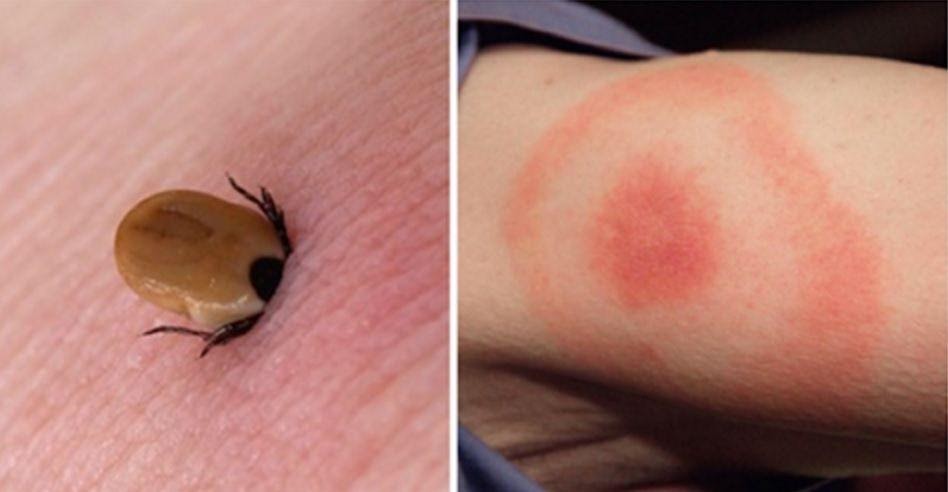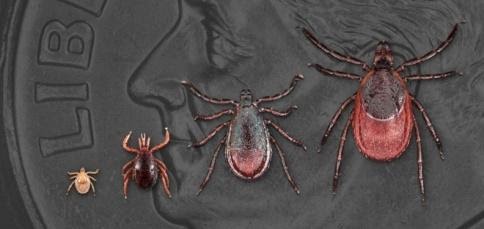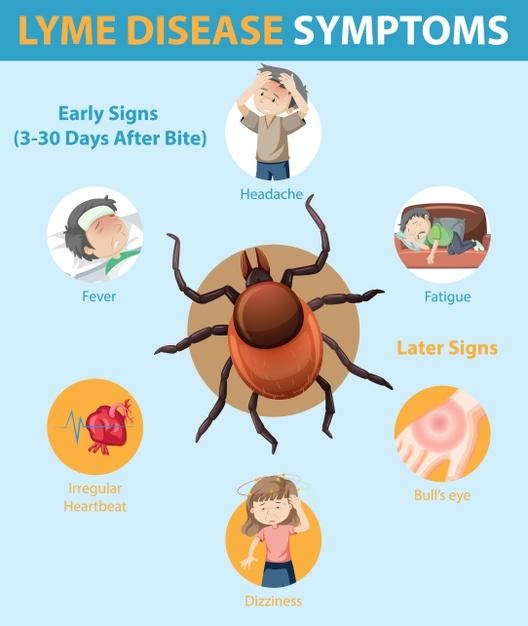
LYME DISEASE
- June 4, 2021
- Posted by Dr. Vaidya Karanvir Singh
- 0 Comment(s)
Table of Contents
What is Lyme disease?
- Lyme disease is a spirochete (A group of bacteria of Spiral shape, some of which are serious pathogens for the humans) infection transmitted by the bite of infected black legged or deer ticks of the Ixodes ricinus complex.
- It is a tick- borne infection that is the most common in the United States and Europe.
- Spirochetes are ingested by the ticks at the time of sucking blood from infected animals or humans.
- Ticks used to attack at night; they remain attached for less than 30 minutes before returning to their hiding places.
- Mode of transmission is either by a bite, through the infected saliva, or by contaminating mucosal membranes with infected coxal fluid.
- Incubation Period- 3 to 30 days
CAUSES
- Causitive Organism– Borrelia species like Borrelia burgdorferi, B.afzelii, Borrelia garinii etc.
- It is caused by a tick bite. The bacteria enter through the skin and make their way to the blood stream.
- The tick must be attached to the skin for 36 to 48 hours in order to transmit this disease.
SIGN AND SYMPTOMS
Early Stage signs and symptoms
- A small, red bump that is similar to the bump of a mosquito bite that often appears at the site of a tick bite or tick removal and resolves over a few days. This is absolutely normal occurrence doesn’t indicate Lyme disease.
Signs and Symptoms occur after a month of Infection-
- Rash- Rash occur 3 to 30 days after an infected tick bite, an expanding red area might appear that sometimes clears in the center.
- Pattern of rash – bull’s-eye pattern
- The rash (erythema migrans) expands slowly over days and can spread to 12 inches (30 centimeters) across. It’s typically not itchy or painful but raised temperature may be noticed of the rash area on touch.
- One of the hallmarks of Lyme disease is Erythema migrans.
- Everyone with Lyme disease may not develop the rash. Some people experience this rash at more than one place on their bodies.
- Other associated symptoms- Fever, chills, fatigue, body aches, headache, neck stiffness and swollen lymph nodes along with the rash.
Later stage signs and symptoms
- Erythema migrans- The rash may appear on other areas of your body.
- Joint pain- Bouts of severe joint pain and swelling are especially likely to affect your knees, but the pain may shift from one joint to the other.
- Neurological problems- One may develop inflammation of the membranes surrounding the brain (meningitis), Bell’s palsy or temporary paralysis of one side of your face, Feeling of numbness or weakness in your limbs, and impaired muscle movement may be noticed after weeks, months or even after years of infection.
Less common signs and symptoms
Several weeks after the infection the following symptoms may develop in some people-
- Heart problems like an irregular heartbeat
- Inflammation of eye
- Hepatitis or Liver inflammation
- Severe fatigue
Complications
If this disease is ignored and left untreated the following complications can be there-
- Lyme arthritis- Chronic joint inflammation particularly of the knee joint.
- Neurological symptoms- Facial palsy and neuropathy
- Cognitive defects like impaired memory
- Irregularities of the Heart rhythm
AYURVEDIC ASPECT AND TREATMENT-
- In Ayurveda all the microorganisms such as microbes. Bacteria, virus or parasites comes under the “Krimi” which means Worm.
- There is neurological involvement so it may be considered that there is Vitiation of Vata Dosha.
- The main aim of treatment will be elimination of the bacteria and to prevent the body from the symptoms due to deranged Vata dosha and also strengthening of the immune system.
- Maintain a good diet and lifestyle.
- Practice Yoga and Pranayama
- Panchakarma therapies like Abhyanga, Shali shashtik pinda sweda, Patra pinda pottali sweda etc. might help to relieve pain and stiffness associated with the disease.
- Food for intake– pungent and bitter is good choice of food for this disease.
- Food to be Avoided- Sweet taste food items, jaggery, curd, fermented products, newly cropped rice, Avoid leafy vegetables.
- Maintain a good sleep hygiene as sleep is an essential Key for the healing.
PREVENTION
The Lyme disease can be prevented by taking the following measures-
- Proper Covering up- While a walk through a wooded or grassy area, one should wear shoes, long pants tucked into your socks, a long-sleeved shirt, a hat and gloves.
- Try to avoid walking through low bushes and long grass. Keep your dog on a leash.
- Insect repellents- Whenever going outside apply insect repellent with a 20% or higher concentration of DEET to your skin. If applied to the children then avoid applying on their hands, eyes and mouth as it may have toxic effects.
- Try to make your Yard Tick-proof- Mow your lawn regularly, Clear bushes and leaves where ticks live. For discouraging rodents that carry ticks- Stack wood neatly in dry, sunny areas.
- Regular Checks- One should check your clothing, children and your pets for the ticks. One should be vigilant especially after spending time in the yard. Deer ticks are often no bigger than the head of a pin, so you might not discover them unless you search carefully.
- Take a Shower- On should take a shower as soon as you come indoors. Showering and using a washcloth might remove unattached ticks as they often remain on your skin for hours before attaching themselves.
- Don’t assume you’re immune- One can get this disease more than once.
- Remove a tick as soon as possible with Forceps- tick should be grasped gently near its head or mouth. Try not to squeeze or crush the tick, but pull them carefully and steadily. After removal of tick dispose it by putting it in alcohol or flushing it down the toilet, and antiseptic ointment should be applied to the bite area.

Dr. Vaidya Karanvir Singh is the younger Vaidya in Chandigarh Ayurved & Panchakarma Centre. He is the fourth generation in his family who is practicing as a general consultant in Ayurved & Panchakarma treatment at Chandigarh. In his practice, he had treated more than 1 Lakh Plus patients worldwide.
Article by Dr. Karanvir Singh (M.D in AYURVEDA, PANCHAKARMA FAGE) and reviewed by Vaidya Jagjit Singh (B.A.M.S)



